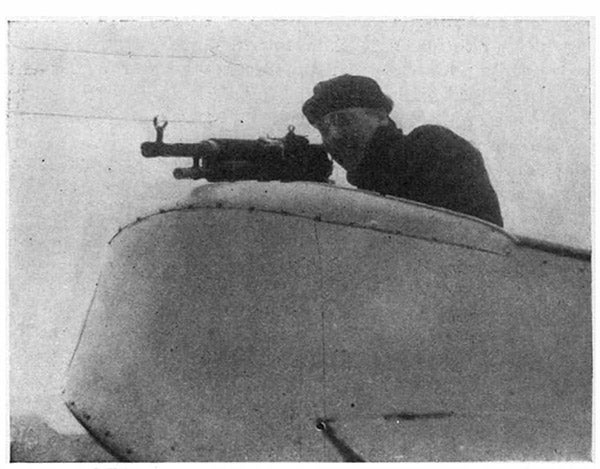This article was published in Scientific American’s former blog network and reflects the views of the author, not necessarily those of Scientific American
Reported in Scientific American, this Week in World War I: September 4, 1915
The cover of this issue from 100 years ago is slightly cringeworthy (technically unfeasible, overly dramatic) but was in fact based on ongoing aviation research in 1915. The Allies were experimenting with the French Voisin Type 5 light bomber to upgrade the armament and protection. The service model of the airplane was powered by a single “pusher-type” propeller engine, usually of 150 horsepower, which left the nose free to mount various weapons (although the aircraft was thereby vulnerable to attack from the rear). More than 300 were manufactured during the war. One experimental design (which seems to be the model for our cover) mounted a six-pounder naval cannon (57 millimeter gun), which probably turned out to be far too heavy to be practical. These airplanes in service sometimes mounted the much smaller and lighter 37-millimeter gun. It was a single-shot gun and had to be reloaded for each shot, so it had limited utility. The bomb load of these aircraft was apparently a very modest 132 pounds.

A more realistic arrangement: the armored nacelle of a Farman armed scout airplane with gunner and machine gun, 1915. (Image: Scientific American, September 4, 1915)
On supporting science journalism
If you're enjoying this article, consider supporting our award-winning journalism by subscribing. By purchasing a subscription you are helping to ensure the future of impactful stories about the discoveries and ideas shaping our world today.
The article, nevertheless, is quite enthusiastic about the possibilities:
“The French Air Service...has urged aeroplane manufacturers to produce a still more powerful fighting craft, so powerful, indeed, that it would knock out anything else aloft. The specifications called for a fast-climbing machine of large cruising radius, that would carry a small quick-firer and be armor-plated.”
“This machine, an all-steel pusher biplane, is driven by a 200 horse-power engine that develops a top speed of 85 miles per hour; it carries a crew of four and mounts a 6-pounder throwing a high-explosive projectile. A light armor belt fitted around the nacelle protects both the crew and the engine against rifle fire from a very close range.
“This machine, the first one that really deserves the name of battle aeroplane, marks an enormous advance over the former types of fighting aircraft employed by the French, which mounted only a machine gun. Being very fast and a quick climber it can easily overtake any other fighting aeroplane and promptly destroy it with its 6-pounder, whose shells, filled with a high explosive, are obviously much more effective than the steel capped bullets thrown by a machine gun. On the other hand this battle aeroplane seems to be practically invulnerable against the speed scouts developing 100 miles per hour, whose pilots are equipped only with automatics against which the armor-clad nacelle affords sufficient protection, while the 15 miles difference in speed is more than counterbalanced by superior armament.”
-
Our full archive of the war, called Scientific American Chronicles: World War I, has many articles from 1914 - 1918 on the development of aviation and weaponry during the war. It is available for purchase at www.scientificamerican.com/products/world-war-i/